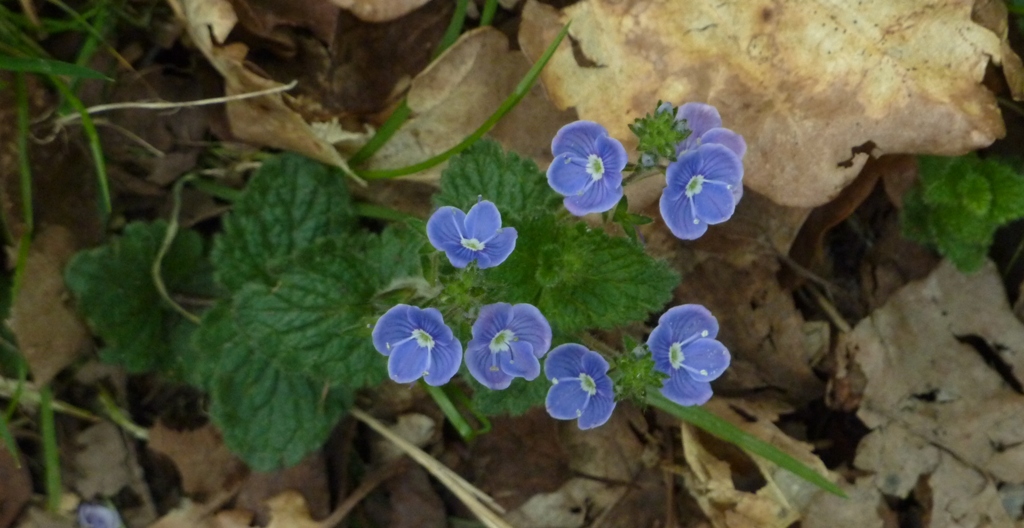
The Veronicaceae or Speedwell family used to be part of the Scrophulariaceae as you can find out in the last post.
In Stace we can find that the Veronicaceae is now a family with 11 genera of which 4 genera are individually very distinctive.
Some authorities, however, including R.B.G. Kew, the R.H.S., Wikipedia, etc have most of these genera in the Plantaginaceae.
The Plantaginaceae is a much shorter family in Stace, which you can read about in an earlier post.
I am using various good websites for you to find out more on each individual plant. The links on the scientific mames are usually from the Online Atlas of the British and Irish Flora, the links on the common names are from Wikipedia or preferably a U.K. website.
Pictures, with gratitude are again by Mike Poulton (M.P.), Rudi Pilsel (R.P.), Matt Summers (M.S.) and Wikipedia Commons.
FBBC is added behind the plant names in the contents below, when the plants occur in the Flora of Birmingham and the Black Country.
Comparing some of the members in the Veronicaceae as seen in the Concise British Flora in Colour by W. Keble Martin:
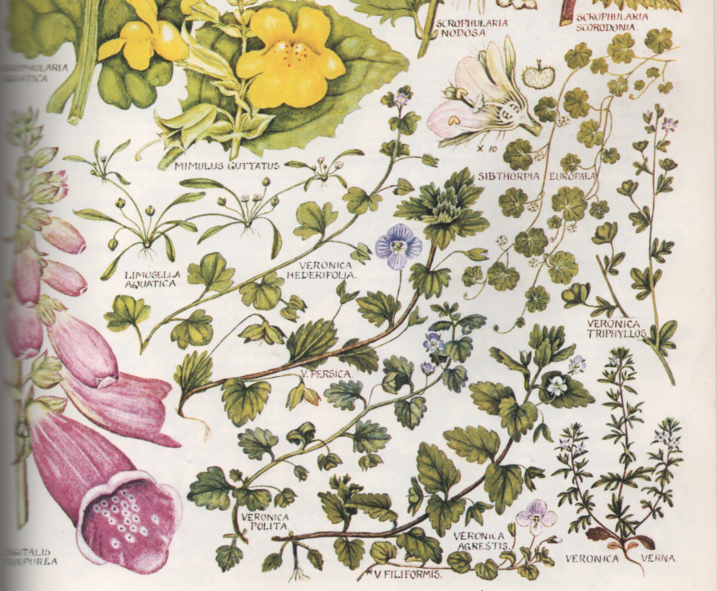
Plate 64 ( part 2 Veronicaceae) in The Concise British Flora in Colour by W.Keble Martin
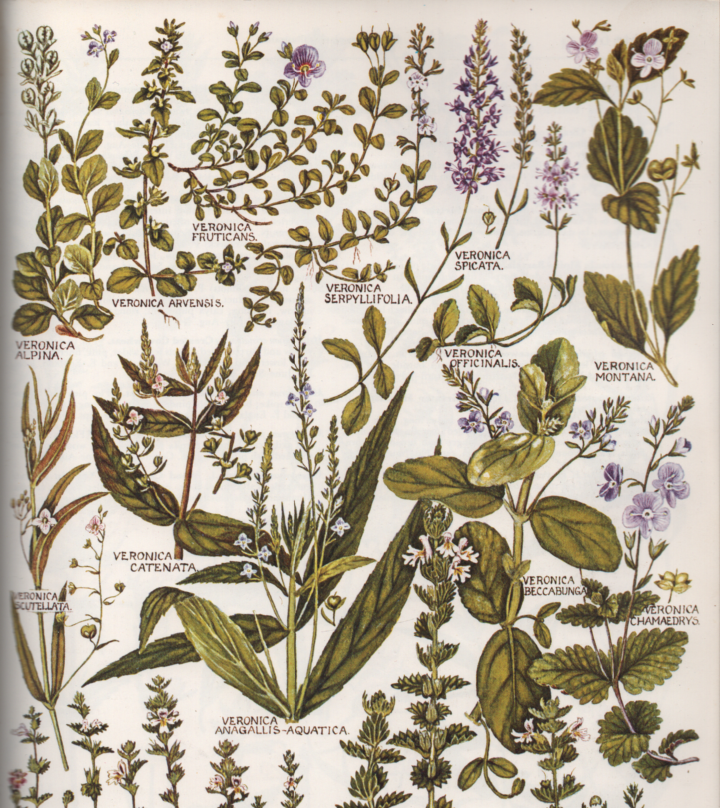
Contents:
Digitalis purpurea or Foxglove FBBC
D. lutea or Straw Foxglove (Neophyte)
Erinus alpinus or Fairy Foxglove (Neophyte) FBBC
Veronica ssp or Speedwells
This large genus with 33 species described in Stace is divided in ten subgenera:
Subgenus 1: Veronica
- V. officinalis or Heath Speedwell FBBC
- V. alpina or Alpine Speedwell
- V. montana or Wood Speedwell FBBC
- V. scutellata or Marsh Speedwell FBBC
Subgenus 2: Beccabunga
- V. beccabunga or Brooklime FBBC
- V. anagallis-aquatica or Blue Water-speedwell FBBC?
- V. x lackschewitzii or Hybrid Water-speedwell
- V. catenata or Pink Water-speedwell FBBC
- V. acinifolia or French Speedwell (Neophyte)
- V. peregrina or American Speedwell (Neophyte)
- V. serpyllifolia or Thyme-leaved Speedwell + 3 subspecies FBBC (subsp. serpyllifolia)
- V. repens or Corsican Speedwell (Neophyte)
Subgenus 3: Pseudolysimachium
- V. longifolia or Garden Speedwell (Neophyte) FBBC
- V. spicata or Spiked Speedwell FBBC
Subgenus 4: Cochlidiosperma
- V. hederifolia or Ivy-leaved Speedwell + 2 subspecies FBBC
- V. crista-gallii or Crested Field-speedwell (Neophyte) FBBC
Subgenus 5: Pellidosperma
- V. praecox or Breckland Speedwell (Neophyte)
- V. triphyllos or Fingered Speedwell (Archaeophyte)
Subgenus 6: Stenocarpon
- V. fruticans or Rock Speedwell
Subgenus 7: Pocilla
- V. filiformis or Slender Speedwell (Neophyte) FBBC
- V. agrestis or Green Field-speedwell (Archaeophte) FBBC
- V. polita or Grey Field-speedwell FBBC
- V. persica or Common Field-speedwell (Neophyte) FBBC
Subgenus 8: Pentasepalae
- V. teucrium or Large Speedwell (Neophyte)
Subgenus 9: Chamaedrys
- V. chamaedrys or Germander Speedwell FBBC
- V. arvensis or Wall Speedwell FBBC
- V. verna or Spring Speedwell
Subgenus 10: Pseudoveronica formerly known as Hebe (Neophytes)
- V. salicifolia or Koromiko FBBC
- V. x lewisii or Lewis’s Hebe
- V. x franciscana or Hedge Veronica
- V. brachysiphon or Hooker’s Hebe FBBC
- V. dieffenbachii or Dieffenbach’s Hebe FBBC
- V. barkeri or Barker’s Hebe
Sibthorpia europaea or Cornish Moneywort
Antirrhinum majus or Snapdragon (Neophyte) FBBC
Chaenorhinum origanifolium or Malling Toadflax (Neophyte)
- C. minus or Small Toadflax (Archaeophyte) FBBC
Misopates orontium or Weasel’s-snout (Archaeophyte) FBBC
- M. calycinum or Pale Weasel’s-snout (Neophyte)
Asarina procumbens or Trailing Snapdragon (Neophyte)
Cymbalaria muralis or Ivy-leaved Toadflax + 2 subspecies (Neophyte) FBBC
- C. pallida or Italian Toadflax (Neophyte) FBBC
- C. herpaticifolia or Corsican Toadflax (Neophyte)
Kickxia elatina or Sharp-leaved Fluellen (Archaeophyte)
- K. spuria or Round-leaved Fluellen (Archaeophyte)
Linaria spp or Toadflaxes
- Linaria vulgaris or Common Toadflax FBBC
- L. x sepium (L. vulgaris x L. repens) FBBC
- L. dalmatica or Balkan Toadflax (Neophyte)
- L. purpurea or Purple Toadflax (Neophyte) FBBC
- L. x dominii (L. purpurea x L. repens) FBBC
- L. repens or Pale Toadflax (Archaeophyte) FBBC
- L. supina or Prostrate Toadflax
- L. arenaria or Sand Toadflax (Neophyte)
- L. pelisseriana or Jersey Toadflax
- L. maroccana or Annual Toadflax (Neophyte) FBBC
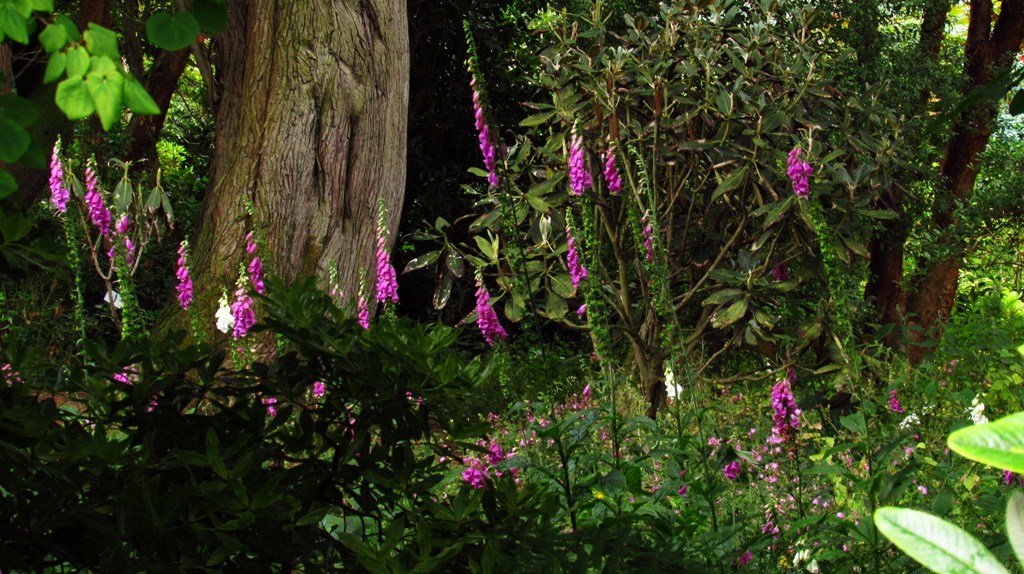
Digitalis purpurea or Foxglove
A biennial or short-lived perennial, common on acidic soils in hedge banks, open woods and woodland clearings, on heath and moorland margins, river banks, montane rocky slopes, sea-cliffs, walls and waste land. It is often found in great abundance in disturbed or burnt areas, such as recently felled forestry plantations.
The plant is frequented by bees, which climb right inside the flower tube to gain the nectar within.
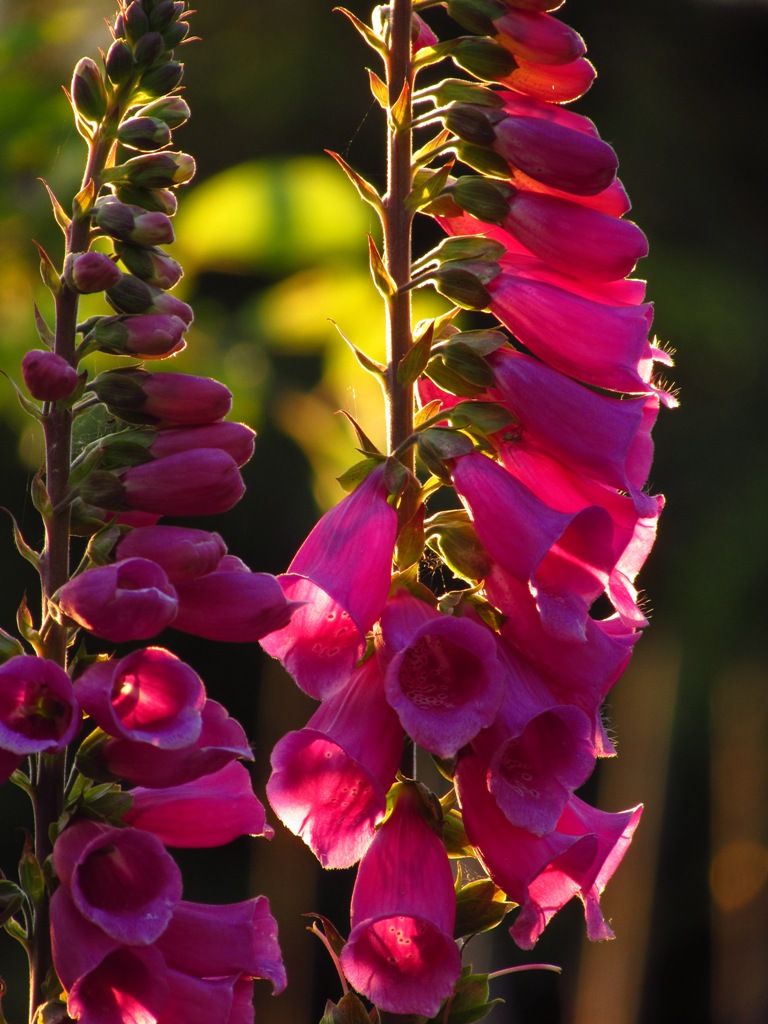
The plant is a popular ornamental, providing height and colour in late spring and early summer. Cultivated forms often show flowers completely surrounding the central spike, in contrast to the wild form, where the flowers only appear on one side. Numerous cultivars have been developed with a range of colours. Several selections have gained the Royal Horticultural Society‘s Award of Garden Merit
Due to the presence of the cardiac glycoside digitoxin, the leaves, flowers and seeds of this plant are all poisonous to humans and some animals and can be fatal if ingested.
Extracted from the leaves, this same cardiac glycoside digitoxin is used as a medication for heart failure. Its clinical use was pioneered by William Withering, who recognized it “reduced dropsy“, increased urine flow, and had a powerful effect on the heart. During World War II, County Herb Committees were established to collect medicinal herbs when German blockades created shortages; this included Digitalis purpurea which was used to regulate heartbeat.
A perennial herb naturalised on roadside verges and banks, quarries, walls and waste ground.
Like all foxgloves, the plant is toxic if ingested.
Like many foxgloves, this plant is often grown in gardens, where it readily self-sows and can become weedy. It has received the Royal Horticultural Society‘s Award of Garden Merit.
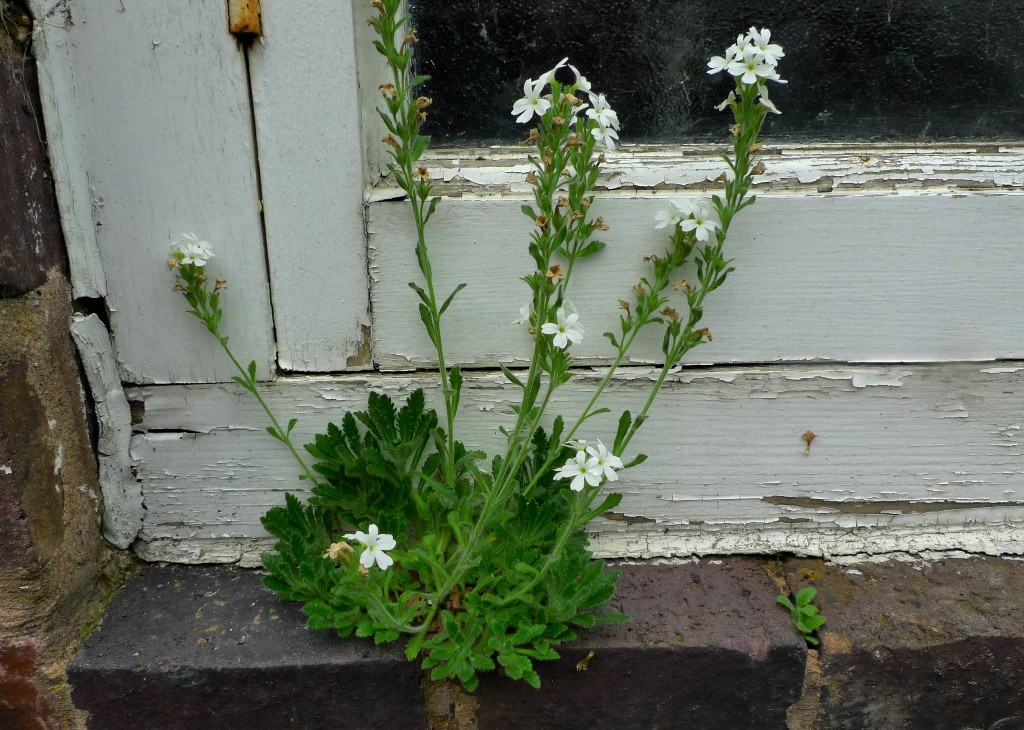
Erinus alpinus or Fairy Foxglove (Neophyte)
This short-lived, semi-evergreen perennial herb occurs in the crevices of old walls and in other stony places, often on limestone or bricks with lime mortar. It seeds freely and thrives in full sun.
Botanist and noted authority on plant-lore Albert Roy Vickery quotes an informant from the town of Hexham thus:
“Fairy foxglove is a small, purple flower which grows intermittently on stone walls in north-east England. Local tradition says that it only grows where Roman soldiers have trod. And certainly it is to be found in the village of Wall (which is, of course, located near Hadrian’s Wall in Northumberland)”
It is a semi-evergreen, perennial chasmophyte. It is popularly grown in rockeries or alpine gardens; and it occasionally becomes naturalised outside its native range, especially on old stone walls, shown well from a well-known location for this species on the old packhorse bridge at Carrbridge in the Highlands of Scotland.
It has gained the Royal Horticultural Society‘s Award of Garden Merit.
Veronica ssp or Speedwells
Veronica is the largest genus in the flowering plant family Veronicaceae, with about 500 species. It was formerly classified in the family Scrophulariaceae.
In Stace 33 species are described which occur in the British Isles. Many are neophytes. A few are archaeophytes.
There aren’t to many uses for this genus; a few have medicinal uses, some edible uses; raw in soup or salads, some as ornamentals and more information can often be found on the link of the plant’s common name.
The 33 species are divided in ten subgenera.
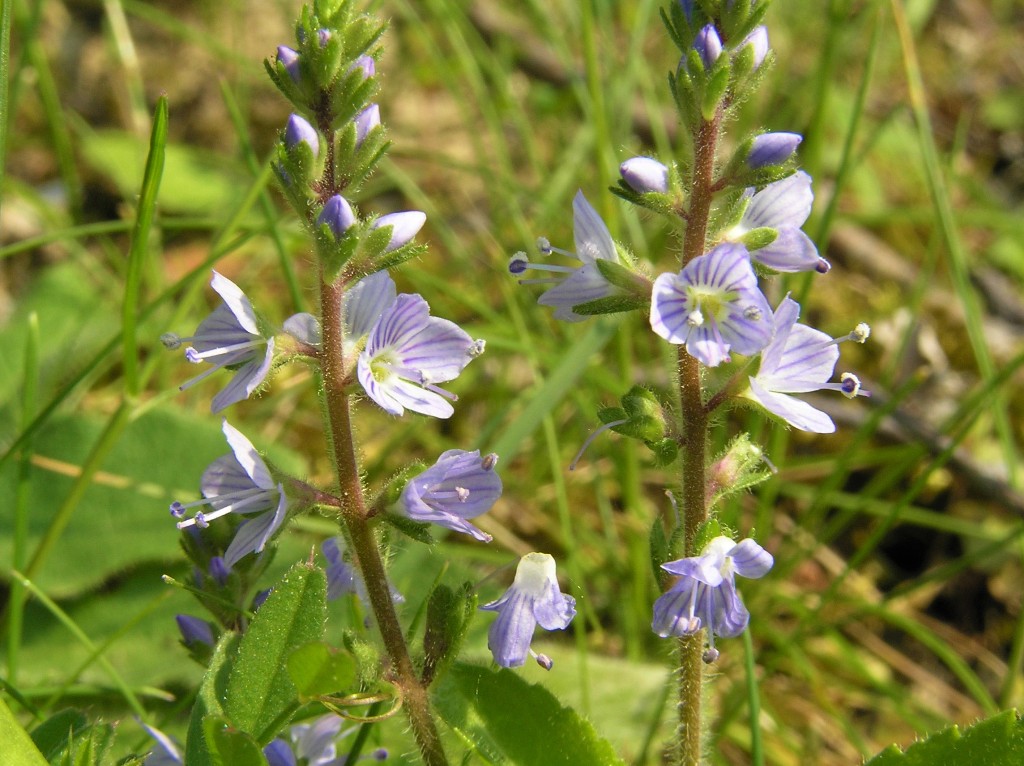
Subgenus 1: Veronica
They have been employed in the treatment of pectoral and nephritic complaints, haemorrhages, skin diseases and the treatment of wounds, though the plant is considered to be obsolete in modern herbalism.
A bitter tangy tea is made from the fresh flowering herb or the dried leaves.
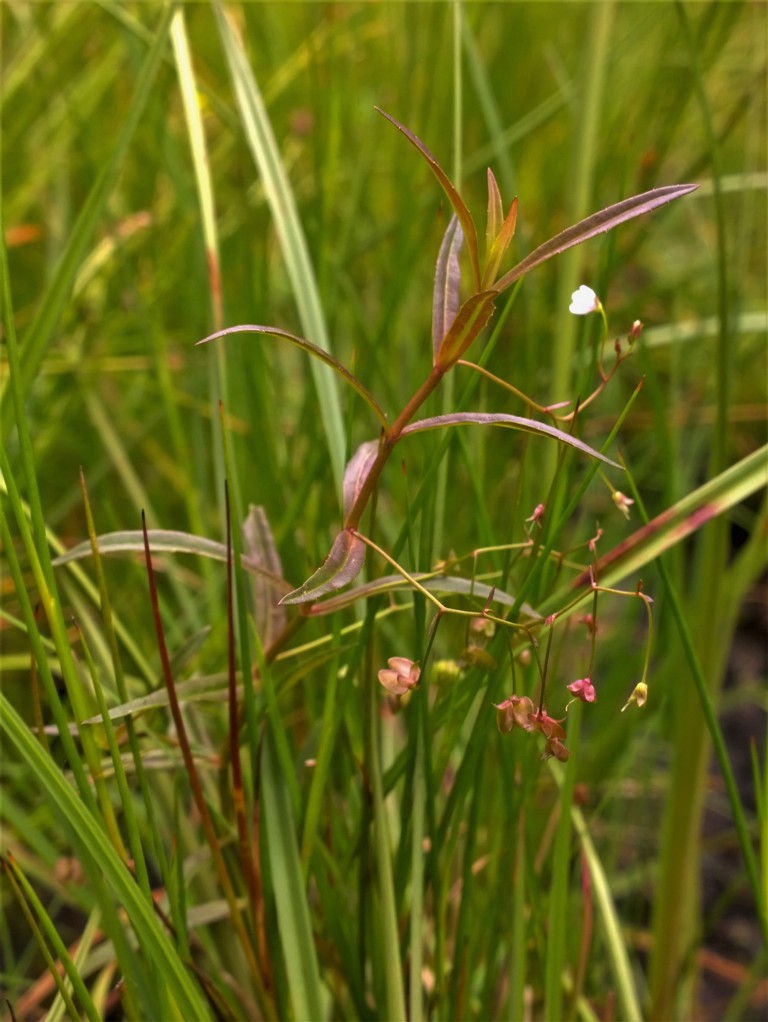
Subgenus 2: Beccabunga
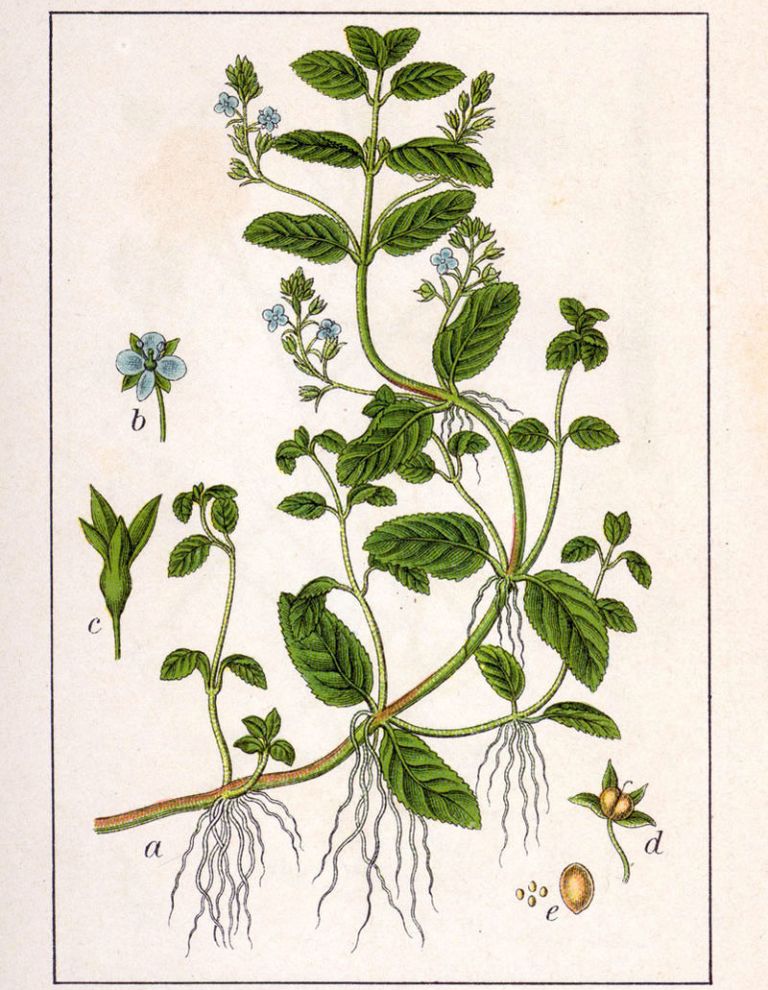
The species name beccabunga comes from Danish bekkebunge (literally “brook bunch”).
Brooklime was one of three traditional antiscorbutic herbs (alongside scurvy grass and watercress), used in purported remedies for scurvy. However none of these herbs are rich in vitamin C and the usual preparation by extracting of juices would have destroyed most of their content, rendering the preparations ineffectual against true scurvy.
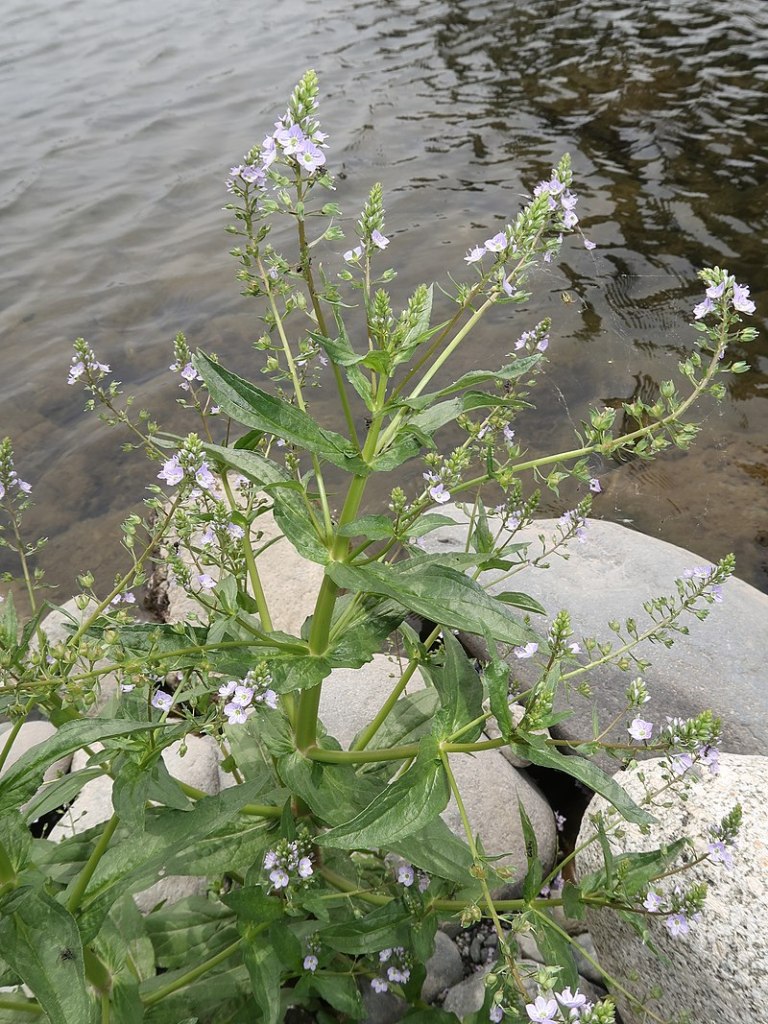
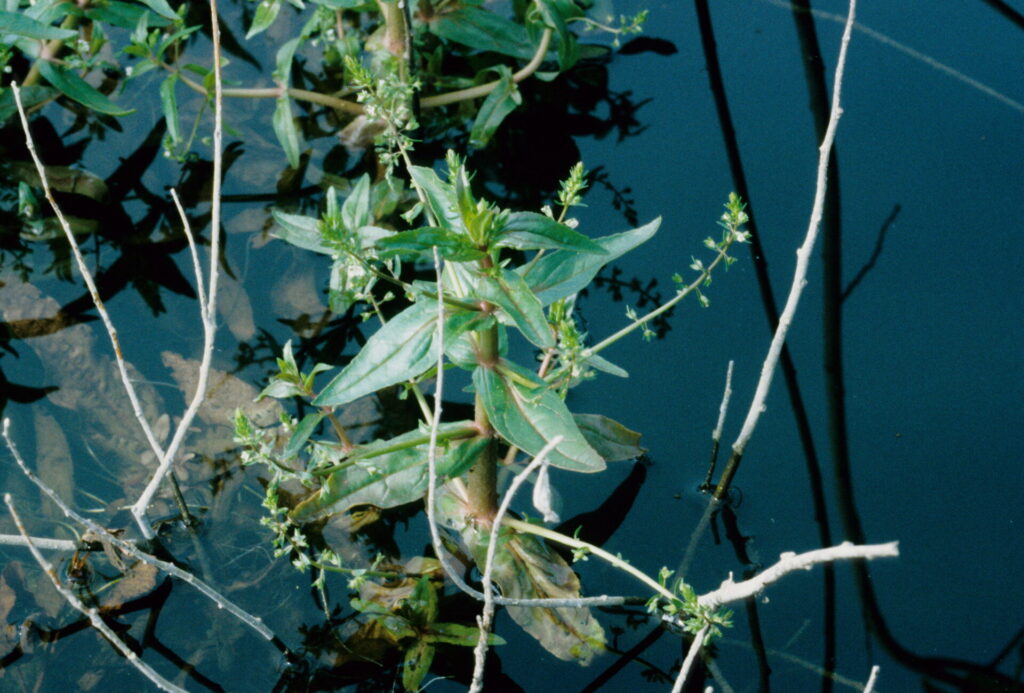
- V. catenata or Pink Water-speedwell
- V. acinifolia or French Speedwell (Neophyte)
- V. peregrina or American Speedwell (Neophyte)
- V. serpyllifolia or Thyme-leaved Speedwell + 3 subspecies
- V. repens or Corsican Speedwell (Neophyte)
Subgenus 3: Pseudolysimachium
- V. longifolia or Garden Speedwell (Neophyte)
- V. spicata or Spiked Speedwell
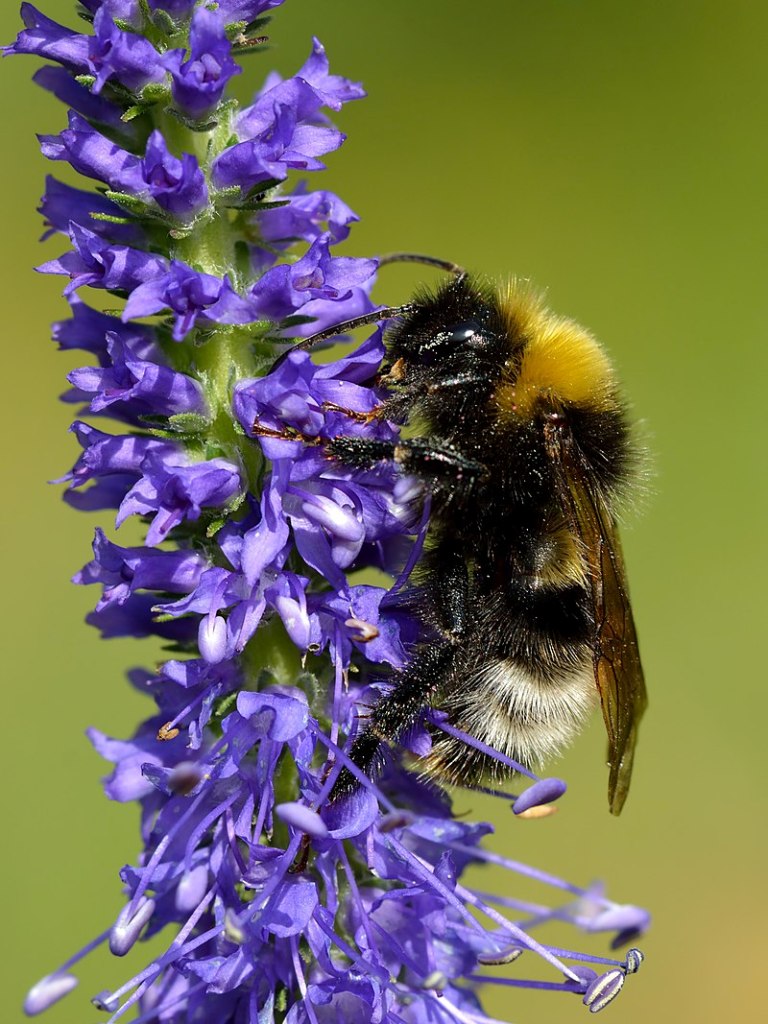
This is the county flower of Montgomeryshire in Wales. Cultivated varieties include blue (‘Royal Candles’), red (‘Red Fox’) and white (‘Noah Williams’).
It became a protected species in the UK in 1975 under the Conservation of Wild Creatures and Wild Plants Act.
Subgenus 4: Cochlidiosperma
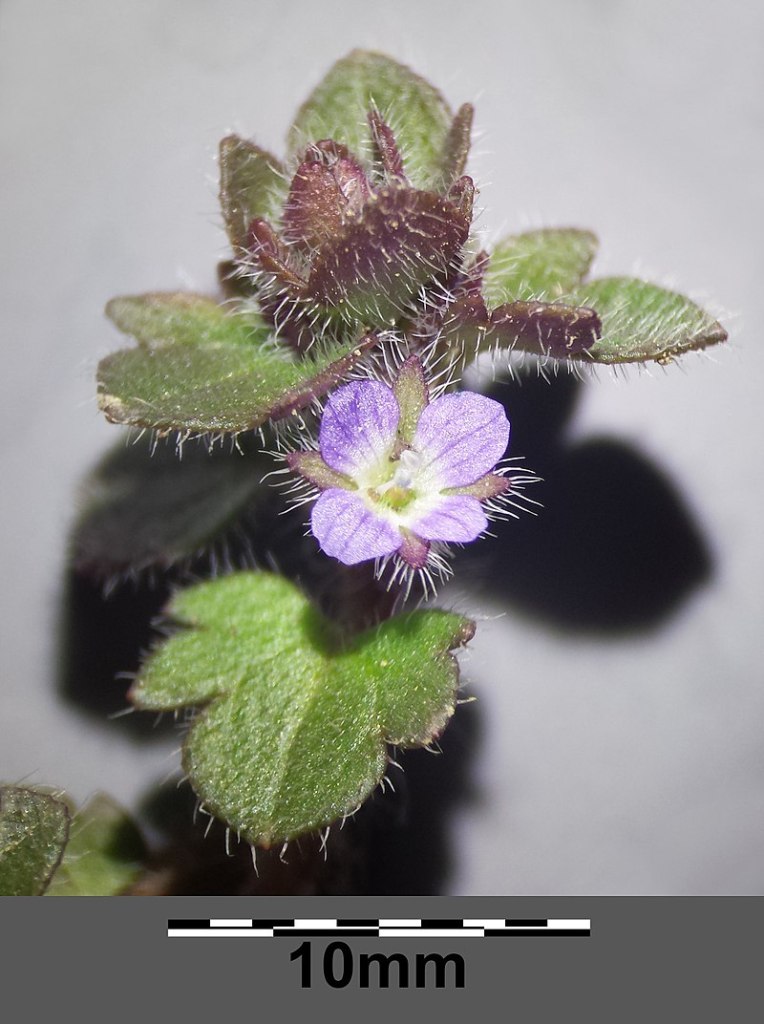
- V. hederifolia or Ivy-leaved Speedwell + 2 subspecies and here
- V. crista-galli or Crested Field-speedwell (Neophyte)
Subgenus 5: Pellidosperma
- V. praecox or Breckland Speedwell (Neophyte)
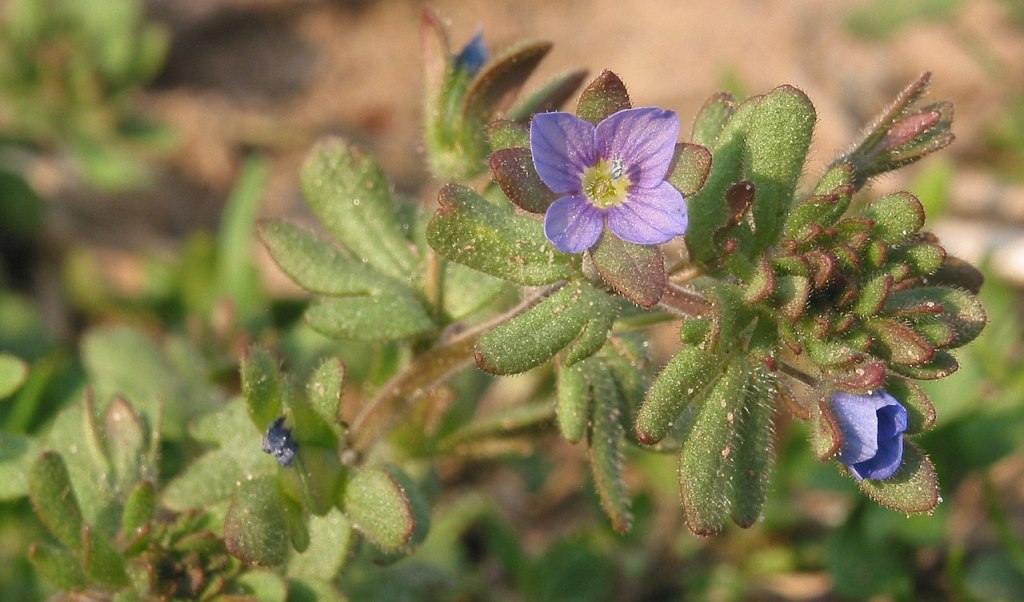
Subgenus 6: Stenocarpon
- V. fruticans or Rock Speedwell and see here
Subgenus 7: Pocilla
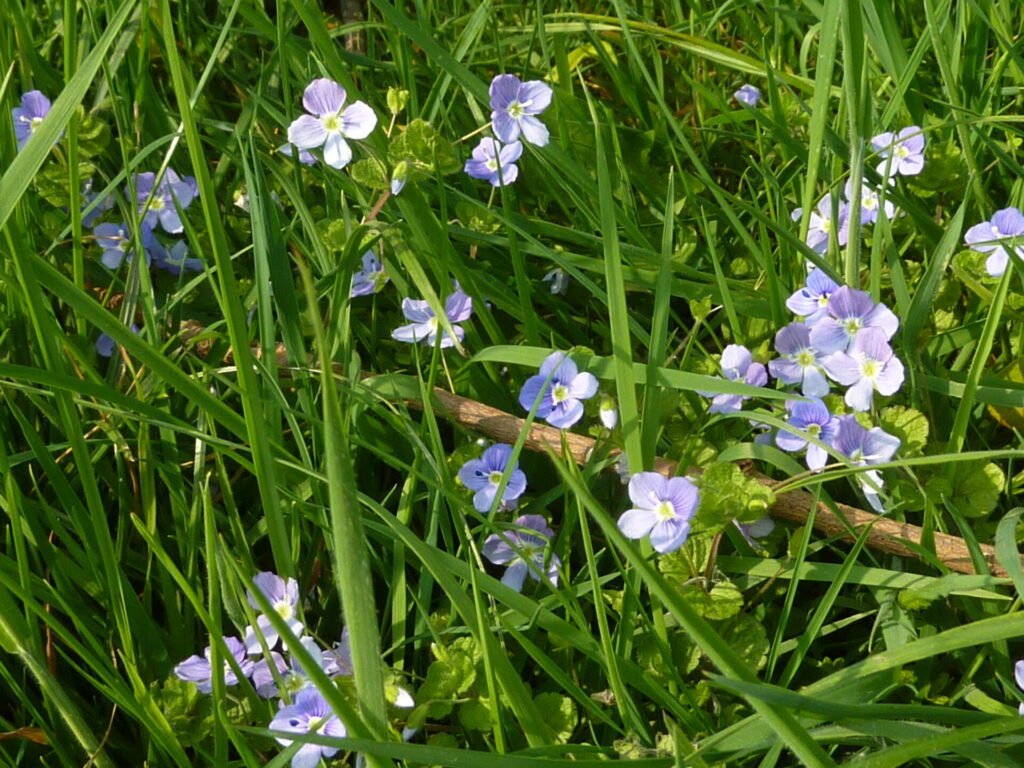
V. filiformis or Slender Speedwell (Neophyte)
V. agrestis or Green Field-speedwell (Archaeophte)
V. polita or Grey Field-speedwell (Neophyte)
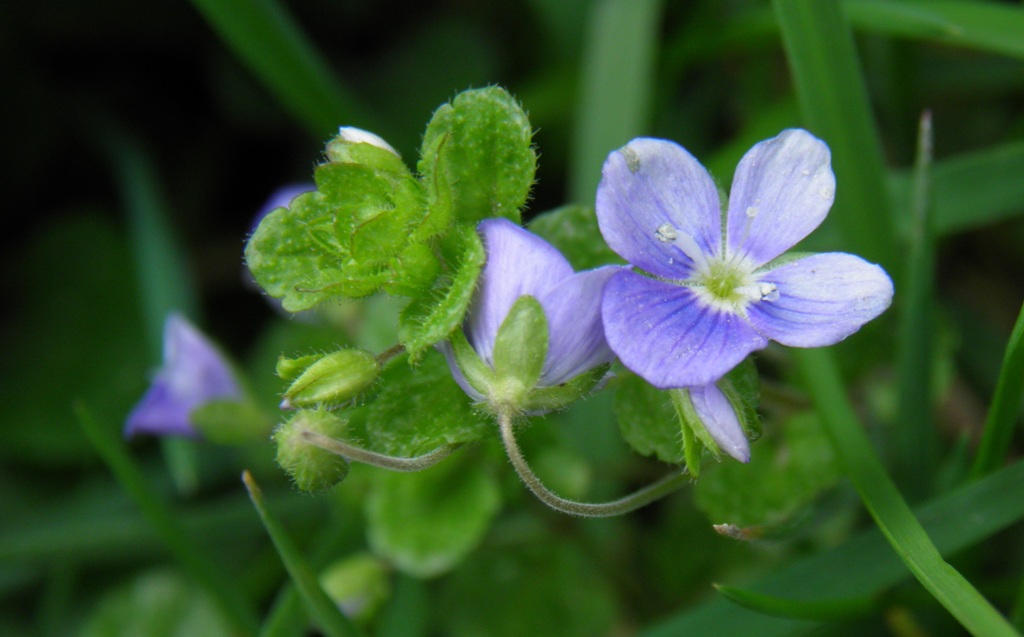
V. persica or Common Field-speedwell (Neophyte)
Subgenus 8: Pentasepalae
- V. teucrium or Large Speedwell (Neophyte)
Subgenus 9: Chamaedrys
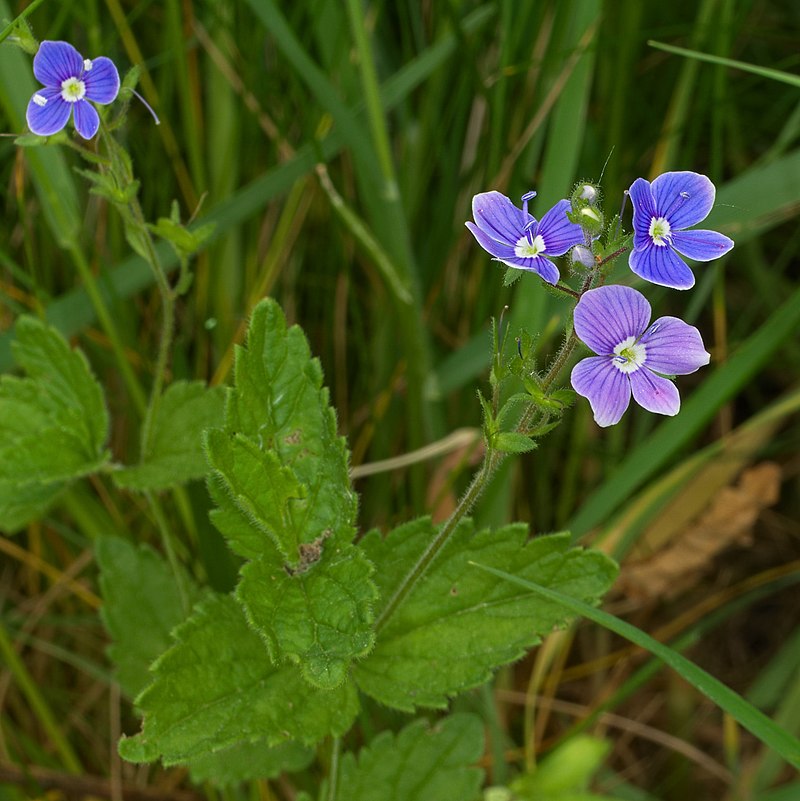
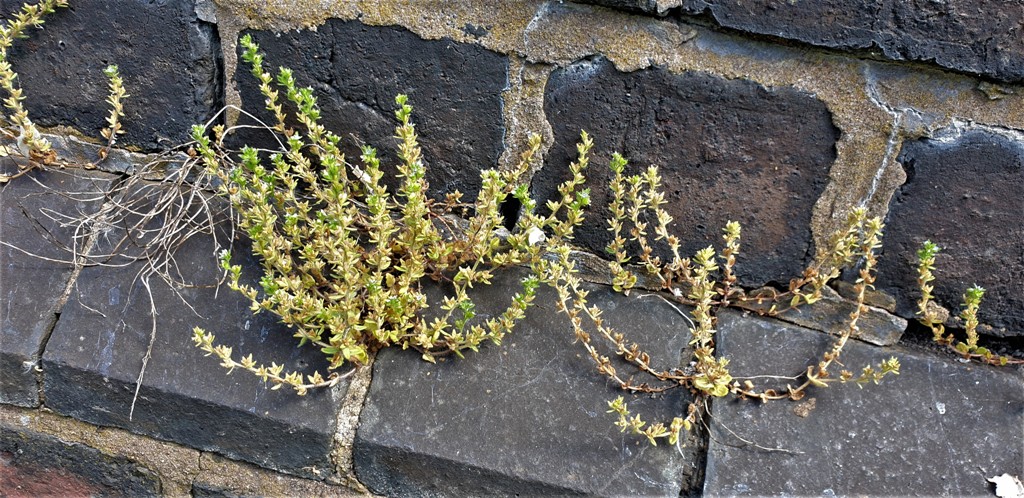
Subgenus 10: Pseudoveronica formerly known as Hebe (Neophytes)
These are native to New Zealand and other regions of the Southern Hemisphere.
All the Pseudoveronica species and varieties and cultivars, still better known as the Hebe, make good garden shrubs. They all attract lots of insects and even have medicinal properties in their native habitats. See for more in the Wikipedia links.
Also see here at the Flora of East Anglia website for the 4 first ‘Hebes’, which have self-seeded there.
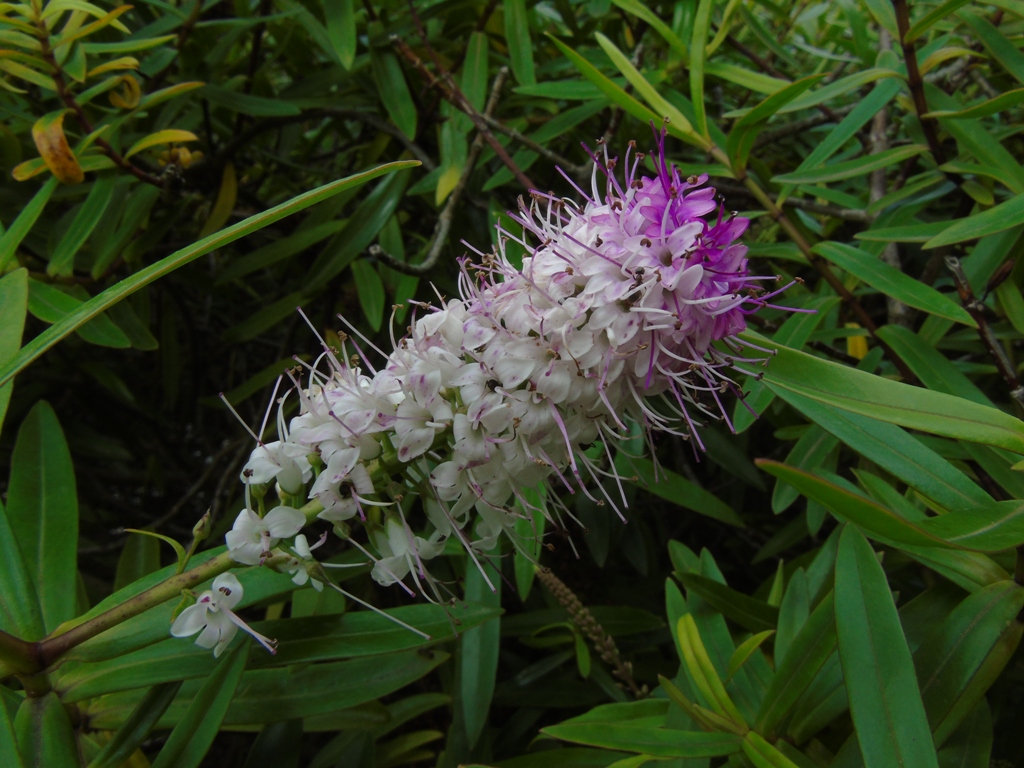
- V. salicifolia or Koromiko
- V. x lewisii or Lewis’s Hebe
- V. x franciscana or Hedge Veronica
- V. brachysiphon or Hooker’s Hebe
- V. dieffenbachii or Dieffenbach’s Hebe
- V. barkeri or Barker’s Hebe
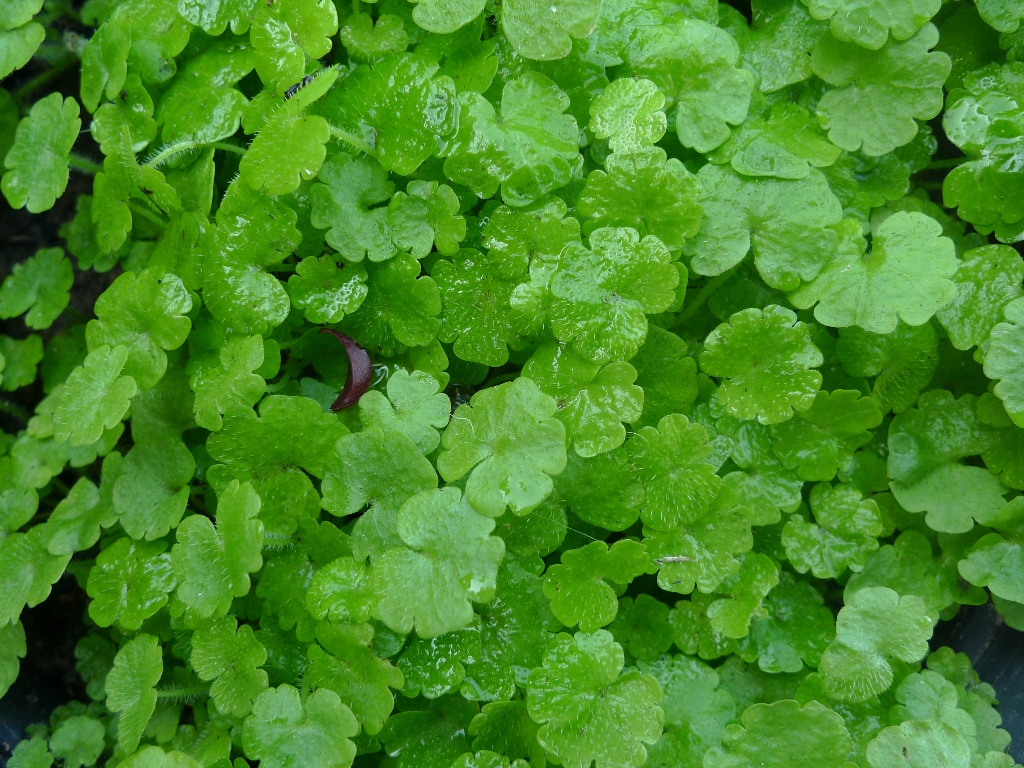
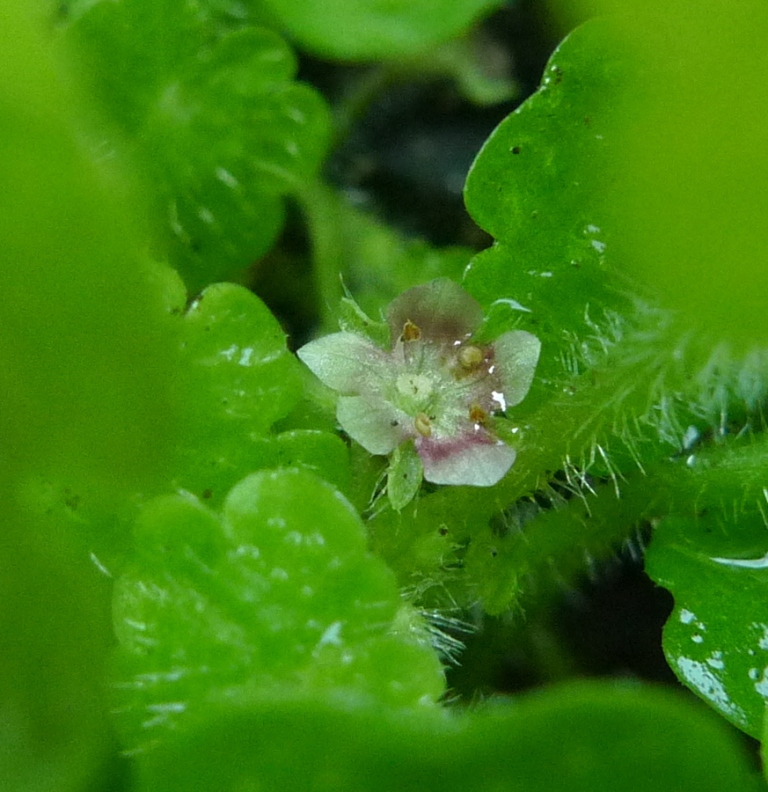
Sibthorpia europaea or Cornish Moneywort (by M.P.)
Sibthorpia europaea or Cornish Moneywort
A procumbent perennial herb of acidic soils in damp, shady places, including woodland, banks by small streams and ditches (often creeping over a carpet of mosses), on wet heathland, on thin soil over granite walls or other masonry, on shaded paths and lawns, and occasionally in other damp habitats.
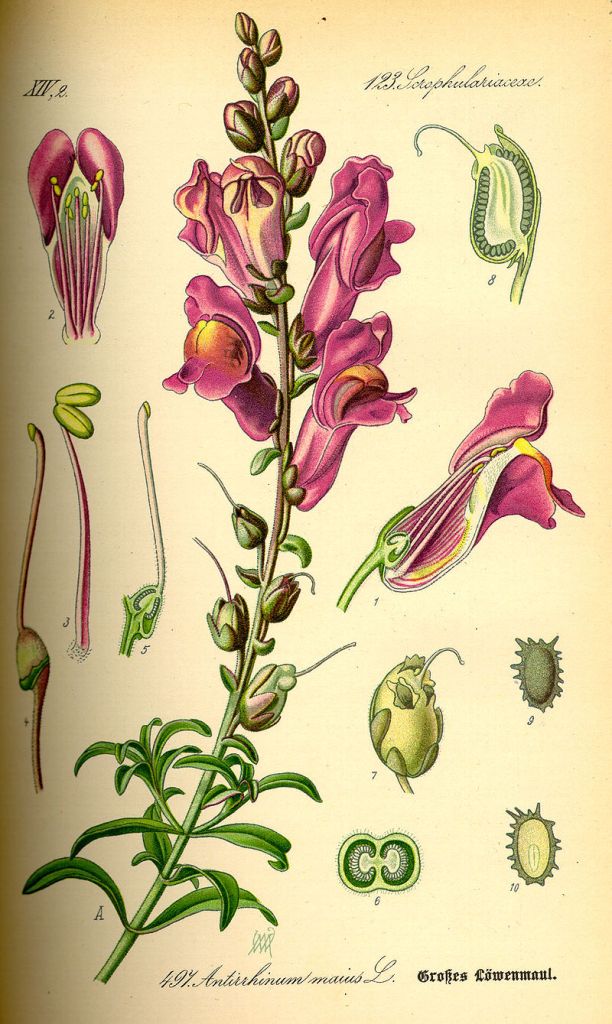
Antirrhinum majus or Snapdragon (Neophyte)
An annual or short-lived perennial herb, widely naturalised on old walls, waysides, pavement cracks, waste ground and rubbish tips.
A. majus has been cultivated here since Elizabethan times and is very popular in gardens. It was first recorded in the wild in 1762.
Though perennial, the species is often cultivated as a biennial or annual plant, particularly in colder areas where it may not survive the winter. Numerous cultivars are available, including plants with lavender, orange, pink, yellow, or white flowers, and also plants with peloric flowers, where the normal flowering spike is topped with a single large, symmetrical flower. The cultivars ’Floral Showers Deep Bronze’ and ‘Montego Pink’ have gained the Royal Horticultural Society’s Award of Garden Merit.
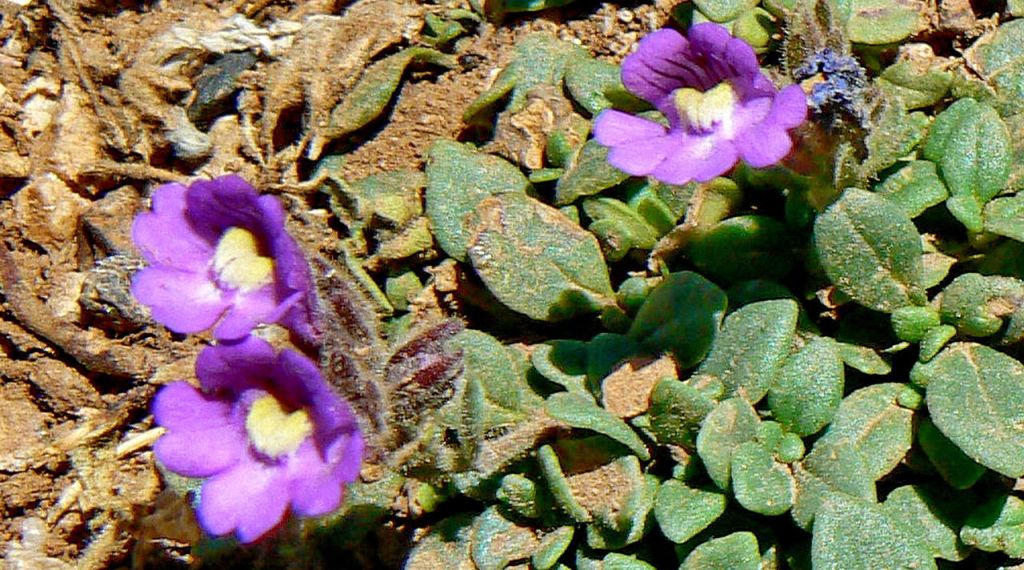
Chaenorhinum origanifolium or Malling Toadflax (Neophyte)
The cultivar ‘Clue Dream’ is a spreading, semi-evergreen perennial with a semi-cascading habit forming low mats to 15cm tall of tiny, rounded, dark green leaves topped in late spring and early summer with small, purple-blue flowers with whitish-yellow throats.
- C. minus or Small Toadflax (Archaeophyte)
A spring-germinating annual of open habitats on well-drained, often calcareous, soils, including cultivated fields, forestry tracks, on rough waste ground, old walls, quarries, and especially along railways.
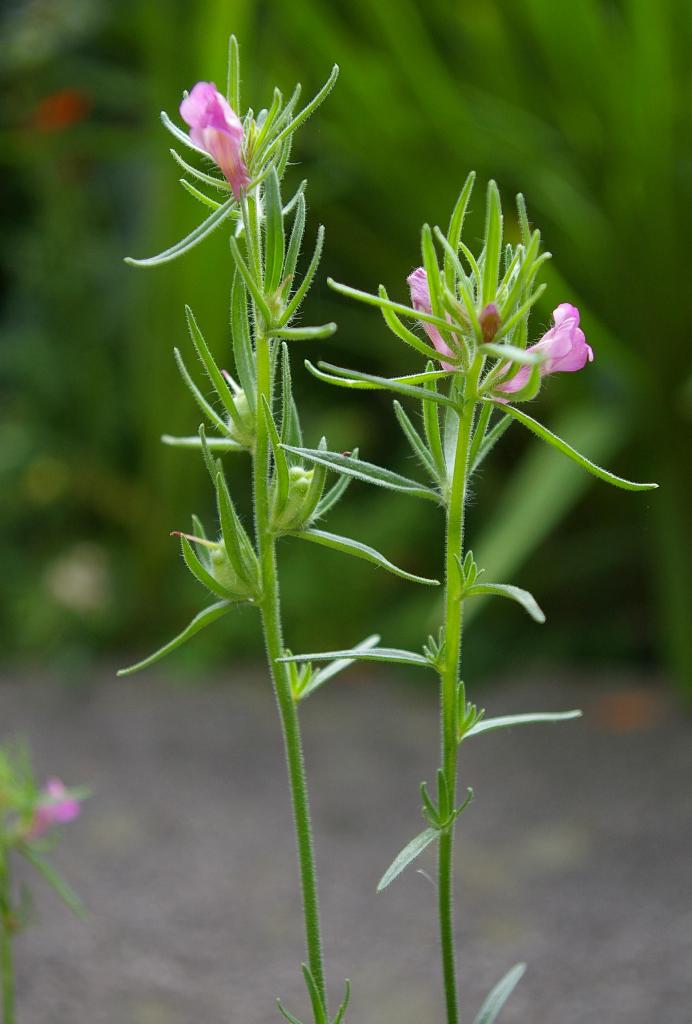
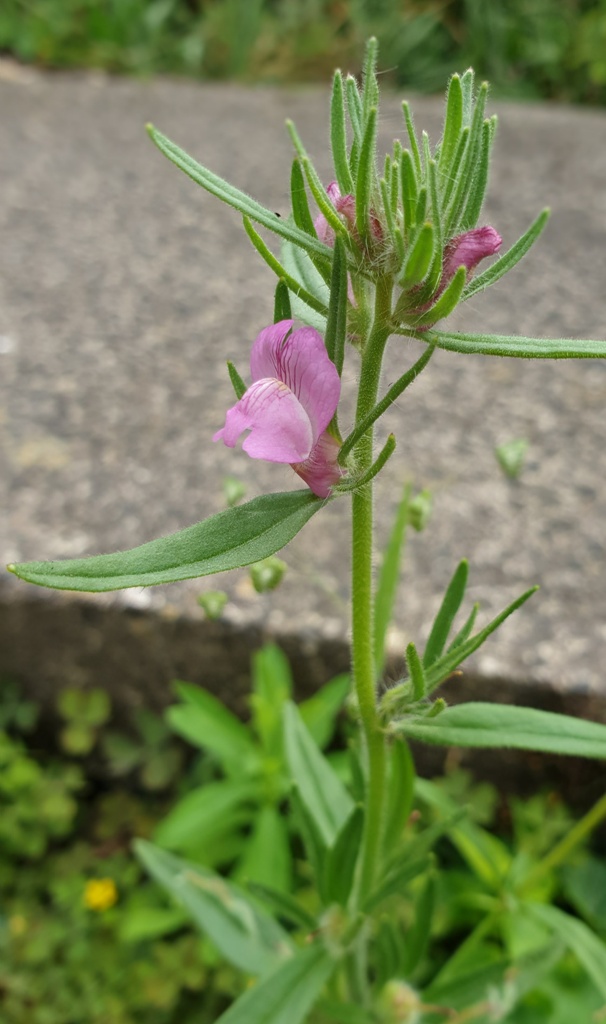
Misopates orontium or Weasel’s-snout (by M.P.)
Misopates orontium or Weasel’s-snout and here (Archaeophyte)
A spring-germinating annual of light soils, found in arable and other cultivated ground including among horticultural crops, and in gardens and waste places.
Asarina procumbens or Trailing Snapdragon (Neophyte)
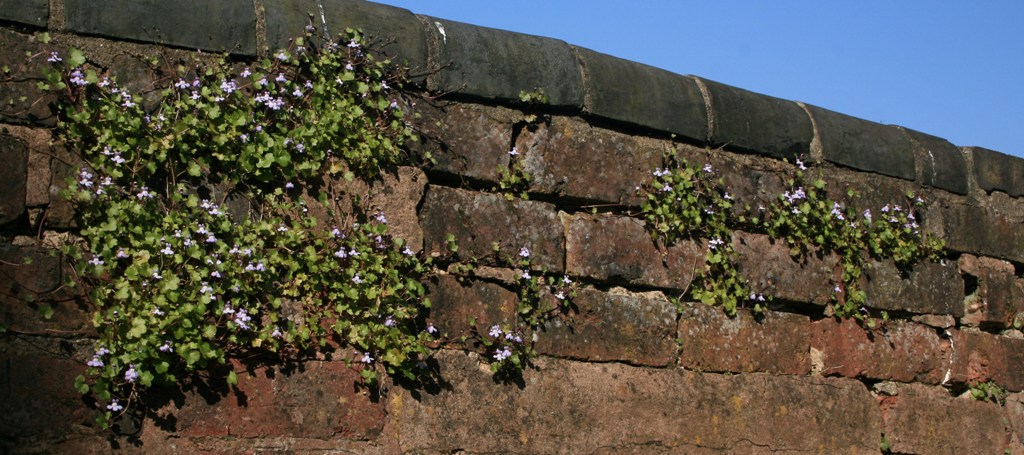
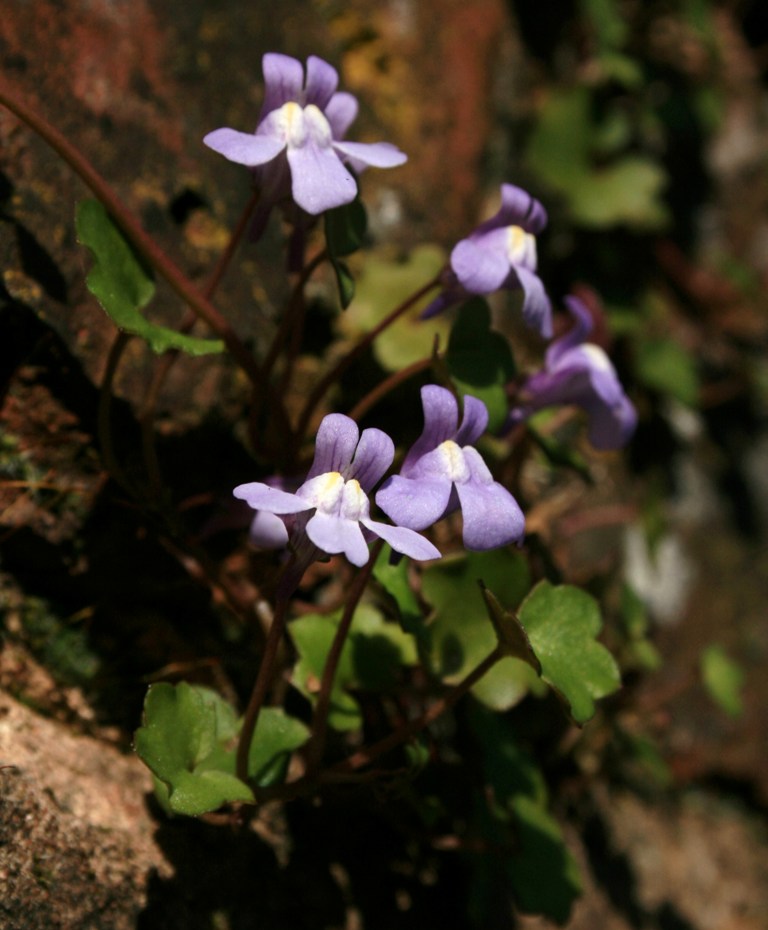
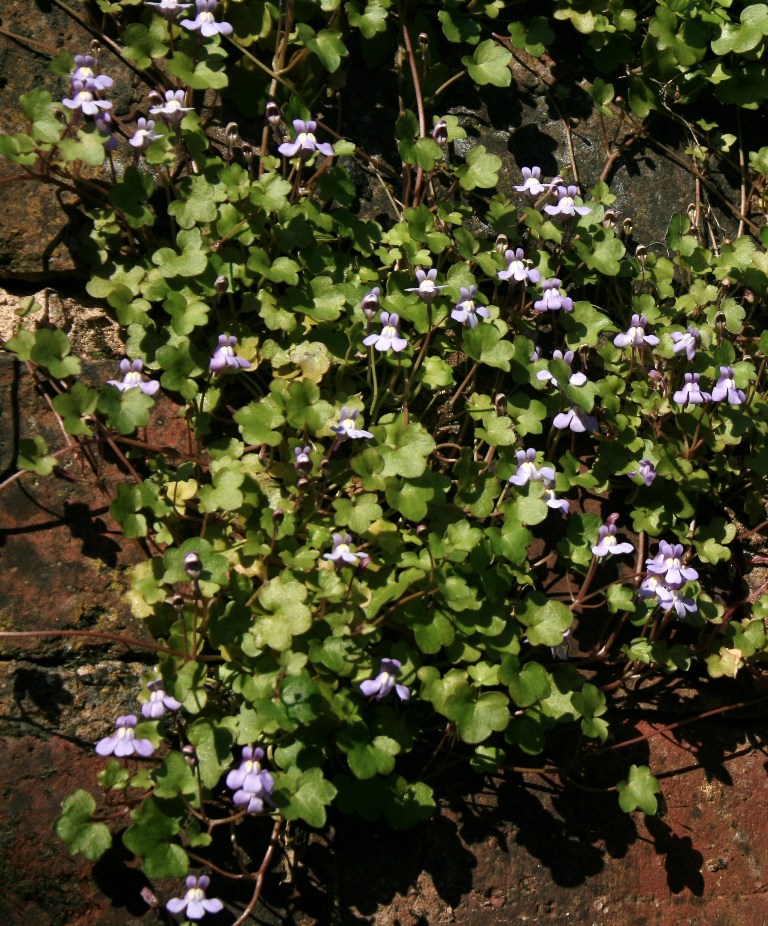
Cymbalaria muralis or Ivy-leaved Toadflax + 2 subspecies and see also here(Neophyte)
This perennial herb is well-established on old walls and bridges, pavements, and in other well-drained rocky and stony places, often near habitation. It is also found as large, prostrate patches on shingle beaches. It can root from fragments or from nodes, and its seeds germinate readily in brick and stone mortar.
- C. pallida or Italian Toadflax and here(Neophyte)
- C. herpaticifolia or Corsican Toadflax (Neophyte)

Kickxia elatine or Sharp-leaved Fluellen (Archaeophyte)
An annual of basic soils, including light soils over chalk and calcareous boulder-clay, found on the headlands and margins of arable fields (particularly cornfields), and less commonly on tracks, waste ground and in gardens.
Linaria spp or Toadflaxes
Several of the plants below are cultivated as an ornamental plant.
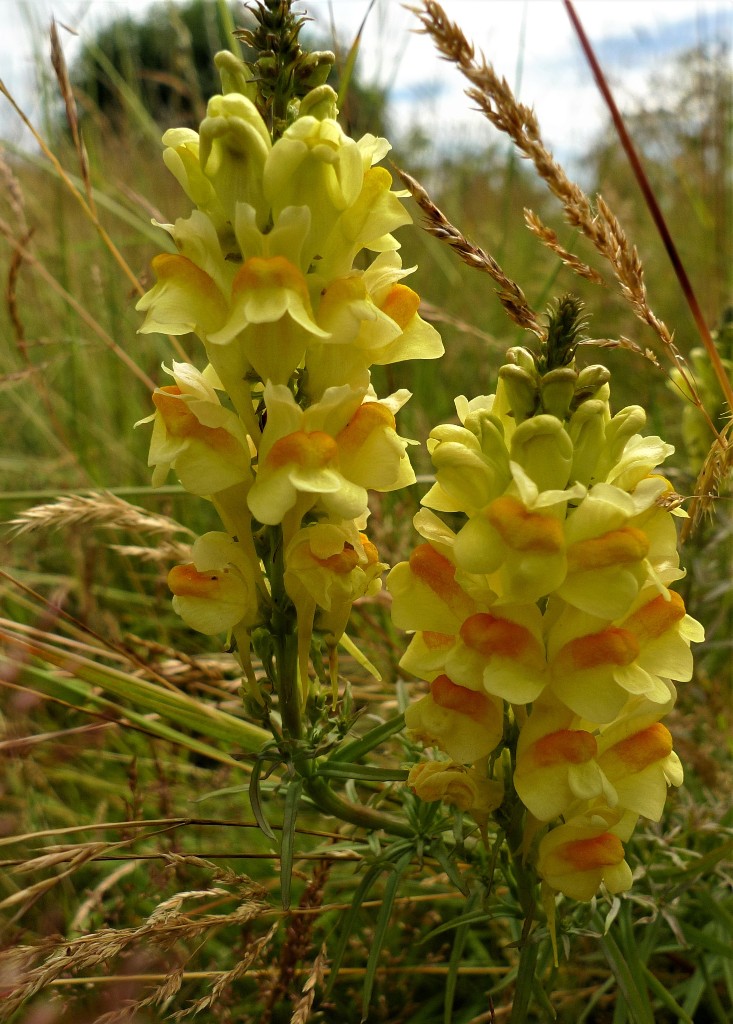
- Linaria vulgaris or Common Toadflax and in a former post here
This perennial herb is found in open grassy places, on stony and waste ground, hedge banks, road verges, railway embankments and cultivated land, especially on calcareous soils.
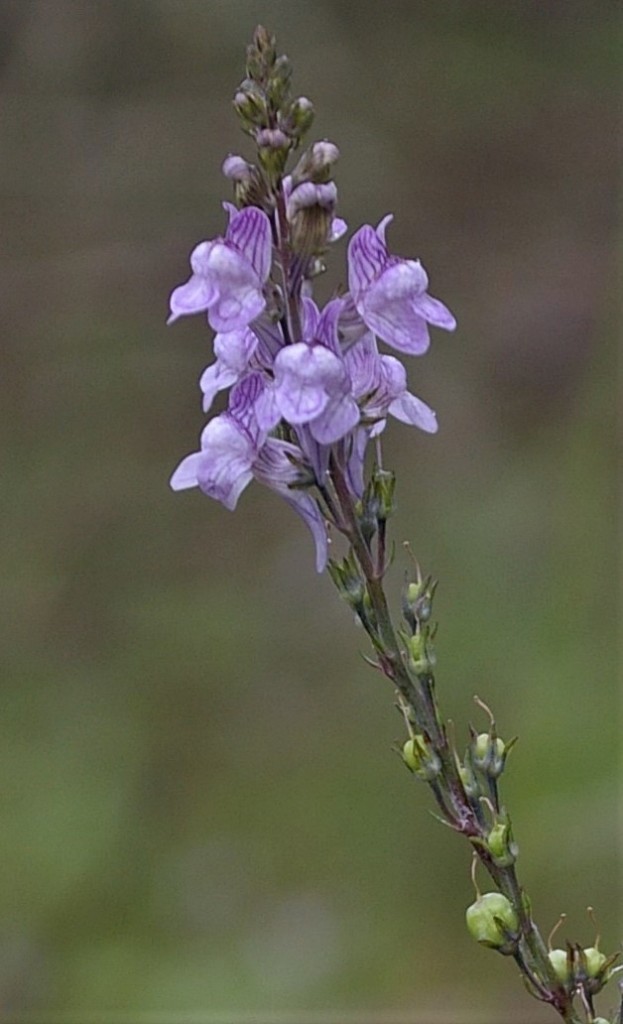
- L. x sepium (L. repens x L. vulgaris)
- L. dalmatica or Balkan Toadflax (Neophyte)
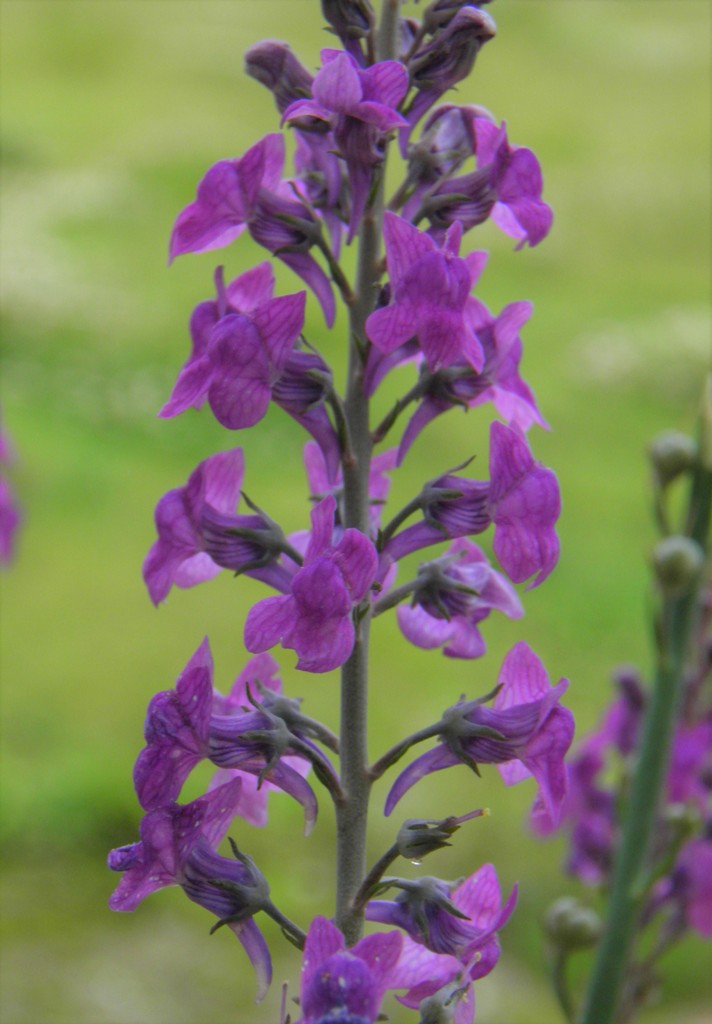
- L. purpurea or Purple Toadflax (Neophyte)
This is cultivated as an ornamental plant. In the UK it is regarded as something of a weed, spreading readily on stony waste ground and walls, although it is tolerated for its attractive, long-lasting flowers which are very attractive to bees.
- L. x dominii or Hybrid Toadflax (L. purpurea x L. repens)
- L. repens or Pale Toadflax (Archaeophyte)
- L. supina or Prostrate Toadflax (Neophyte)
- L. arenaria or Sand Toadflax (Neophyte)
- L. pelisseriana or Jersey Toadflax
- L. maroccana or Annual Toadflax (Neophyte)
